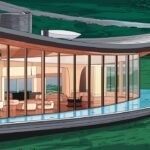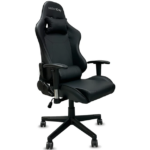The Ultimate Guide to Air Conditioning Systems

Air conditioning is more than a luxury; in many parts of the world, it’s a necessity for comfort and health during the warmer seasons. This guide explains the various air conditioning systems available, their advantages and disadvantages, key features to consider, and maintenance tips to ensure your system operates efficiently for years.
Whether you’re installing a new system, upgrading an old one, or simply curious about how air conditioning works, you’ll find valuable insights and practical advice here.
Keep cool and carry on with your ultimate guide to air conditioning systems; if you need help with your AC system, feel free to contact the most trusted AC repair service in Boulder, CO.
Types of air conditioning systems
There are several types of air conditioning systems to choose from, each with its unique features and benefits. The most commonly used ones include:
1. Window AC units
Window AC units are compact air conditioners designed to fit within the frame of a window. They are a popular choice for single rooms or small spaces due to their simplicity and ease of installation.
A window AC draws warm air from the room into the unit, passes it over a refrigerant-cooled coil, and then blows the cooled air back into the room. The heat absorbed from the room is expelled outside through the unit’s exterior side.
These self-contained units are convenient and cost-effective for cooling a specific area without extensive installation.
2. Split system AC units
Split system units consist of two main components—an outdoor system and an indoor system connected by a refrigerant line. The indoor unit is usually placed on a wall or ceiling and can cool multiple rooms or a larger area. These systems are more expensive than window AC units but are quieter, energy-efficient, and provide better temperature control.
Split system AC units are ideal for larger spaces or homes with multiple rooms as they can be zoned, allowing you to set different temperatures for each area. They also have advanced features such as air purifying, dehumidifying, and programmable thermostats for additional convenience.
3. Central AC systems
Central AC systems are the most frequent type of air conditioning in larger homes or commercial buildings. The central system cools the air and dehumidifies it. This is then distributed to each room through ducts. These systems are expensive to install but offer efficient cooling for large spaces and can also be used for heating.
Central AC systems require regular maintenance to ensure proper operation and longevity. For optimal performance, it is important to change filters regularly, clean the coils, and schedule annual professional tune-ups.
4. Ductless mini-split AC systems
Similar to split system units, ductless mini-split systems have an outdoor system and one or more indoor systems that can be mounted on the wall or ceiling. The units don’t require ductwork and are, therefore, a great option for older houses or buildings with no existing ductwork. They are also energy-efficient and offer individual temperature control for each room.
Ductless mini-split systems are costlier to install, but they provide flexibility in terms of placement and zoning. They also provide better indoor air quality as there is no ductwork where dust and allergens can accumulate.
Key features to consider
When choosing an air conditioning system, there are various key features you should consider to ensure optimal performance and efficiency:
- Cooling capacity: This is measured in British Thermal Units (BTUs) and knows the amount of heat a unit can remove from a space within an hour. The suitable cooling capacity will depend on the size of your space and climate.
- Energy efficiency: Seek for units with a high SEER rating, which measures how efficiently a system uses energy. A higher SEER rating means lower operating costs.
- Noise level: Some systems may produce more noise than others, so consider this if you’re sensitive to sound or plan to install the unit in a bedroom or quiet space.
- Programmable thermostat: This thermostat allows you to adjust and control the temperature and cooling schedule, helping save energy and money.
Maintenance tips
Proper maintenance is crucial for maintaining your air conditioning system running effectively and prolonging its lifespan. Here are some tips to keep in mind:
- Replace or clean air filters regularly to guarantee proper airflow and prevent dust build-up.
- Keep the outdoor system free from debris, such as leaves or branches, and make sure there is enough clearance around it for proper ventilation.
- Schedule annual professional maintenance to inspect for any issues and tune up your system for optimal performance.
- Use a programmable thermostat to avoid overworking your system and save energy.
With this ultimate guide, you now better understand the different types of air conditioning systems, key features to consider when choosing a unit, and maintenance tips to keep it running smoothly. Remember to consult with a trusted AC repair service for any concerns or issues with your system.


































































